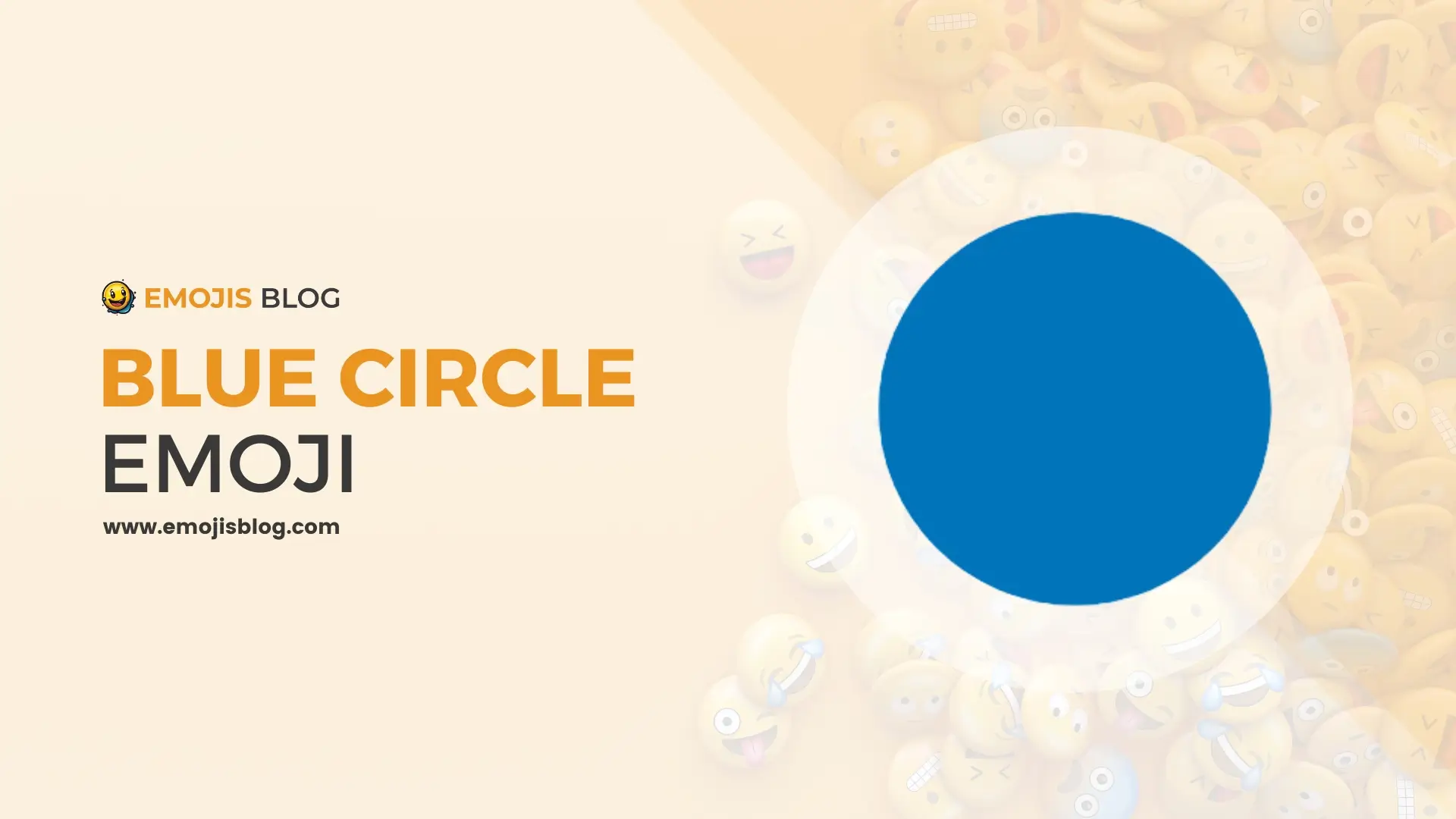What Does The Blue Circle Emoji 🔵 Mean?
🔵
Blue Circle Emoji 🔵 Meaning
The blue circle emoji (🔵) is a versatile and simplistic symbol that conveys a range of meanings depending on the context. Its circular shape universally represents completeness, continuity, and unity, while its blue color adds layers of calmness, stability, and sometimes melancholy. In digital communication, it’s often used for emphasis, aesthetic enhancement, or as a bullet point, while in branding and art, it symbolizes trustworthiness and depth. This emoji’s ability to encapsulate concepts of eternity, harmony, and tranquility, along with its straightforward design, makes it a popular choice in various forms of online and textual expression.
Technical Information
| Attribute | Details |
|---|---|
| Emoji | 🔵 |
| Unicode Version | Unicode 6.0 (2010) |
| Unicode Code Point | U+1F535 |
| HTML Entity | 🔵 |
| CSS Code | \1F535 |
| Shortcode (Various Platforms) | :blue_circle: (Slack, GitHub, etc.) |
| Category | Symbols |
| Subcategory | Geometric |
| Keywords | circle, blue, geometric, round |
| Introduced in Emoji Version | Emoji 1.0 (2015) |
Understanding the Blue Circle Emoji: 🔵
In the colorful and expressive world of emojis, each symbol carries its own unique meaning and significance. Among these, the blue circle emoji (🔵) stands out for its simplicity and versatility. This article delves into the various interpretations and uses of the blue circle emoji, exploring its cultural, emotional, and contextual implications.
The Basic Meaning
A Symbol of Completeness and Continuity
At its core, the blue circle emoji represents completeness and continuity. The shape of a circle, with no beginning or end, is often associated with cycles, wholeness, and perfection. In many cultures, circles symbolize unity and harmony.
The Color Blue
The color blue adds another layer of meaning. Blue is often linked to calmness, stability, and reliability. It can evoke feelings of tranquility and serenity. In certain contexts, blue also represents sadness or melancholy, giving the emoji a dual nature depending on its usage.
Cultural and Contextual Interpretations
In Digital Communication
In texting and online communication, the blue circle emoji is versatile. It can be used to emphasize a point, represent a bullet point in a list, or simply add a decorative element to a message.
In Branding and Marketing
Companies often use the blue circle in logos and branding, capitalizing on its connotations of trustworthiness and professionalism. The simplicity of the design makes it easily recognizable and memorable.
Symbolism in Art and Literature
Artists and writers may use the blue circle to convey deep, abstract concepts such as eternity, the universe, or life cycles. Its simplicity allows for a wide range of interpretations, making it a powerful symbol in creative works.
Emotional and Psychological Aspects
Conveying Mood and Emotion
The blue circle can be used to express a calm or reflective mood. In some cases, it might also be used to indicate sadness or to provide a sense of calm and peace in a conversation.
The Psychology of Circles and Color
Psychologically, circles are seen as inclusive and protective shapes, while the color blue is often associated with depth and stability. This combination can evoke a sense of safety and introspection.
Usage in Social Media and Digital Platforms
As an Icon and Emoji
On social media, the blue circle emoji is often used for aesthetic purposes, to create visually appealing posts or to complement other emojis and text.
In User Interfaces
In digital user interfaces, blue circles are frequently used as icons to represent information, settings, or other interface elements, leveraging their clarity and simplicity.
Conclusion
The blue circle emoji 🔵, while seemingly simple, carries a multitude of meanings and uses. Its versatility lies in its ability to convey different emotions, represent various concepts, and fit seamlessly into multiple contexts. Whether in digital communication, branding, art, or emotional expression, the blue circle remains a powerful and adaptable symbol in our visual language.

